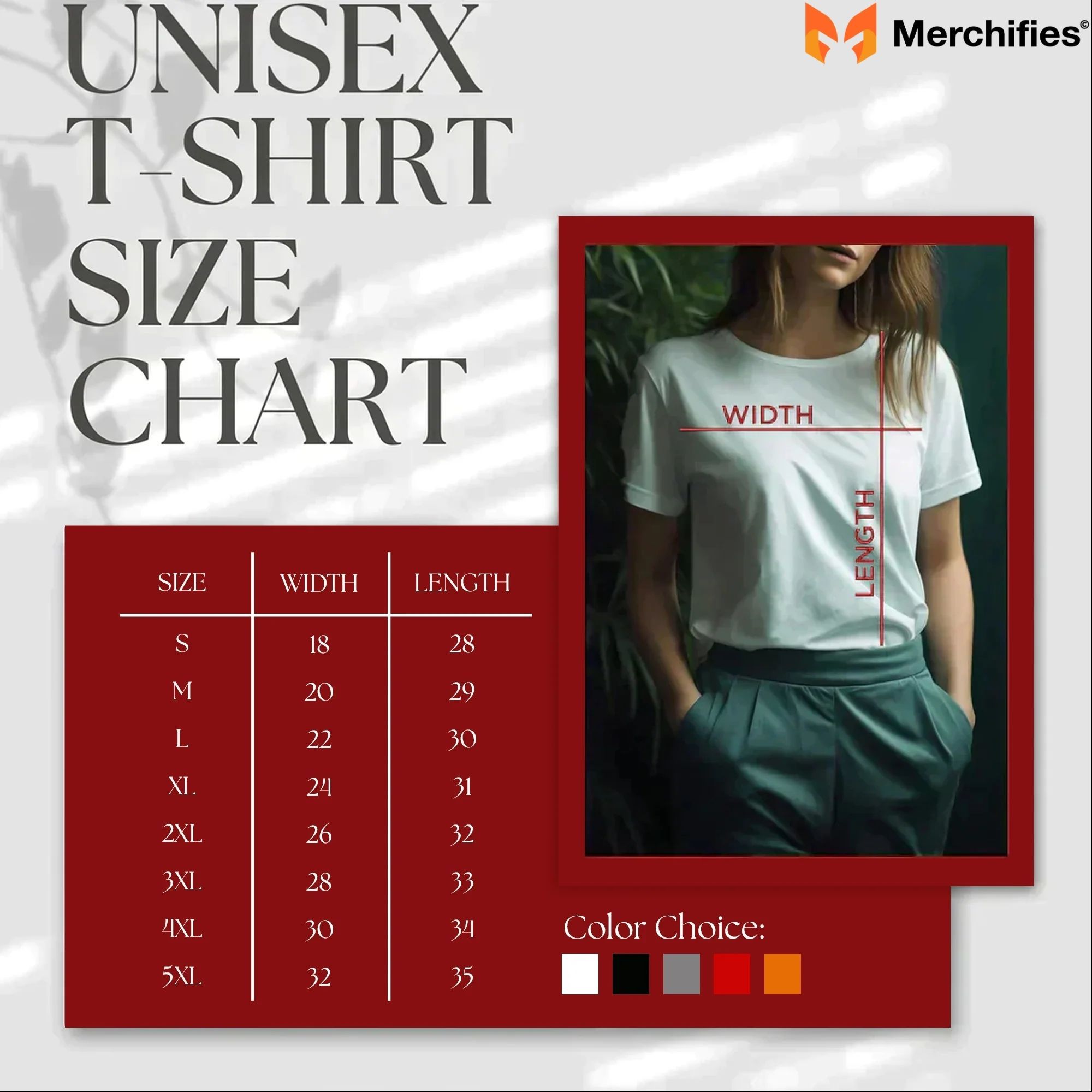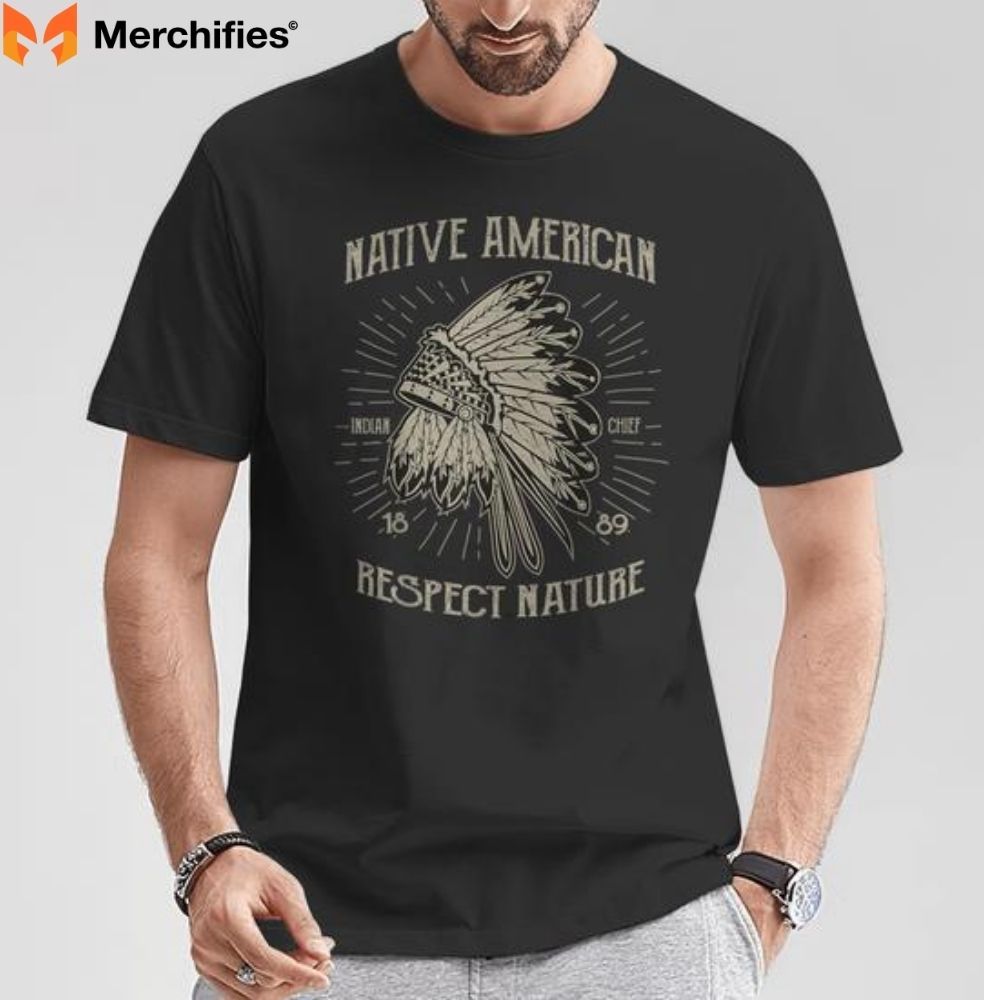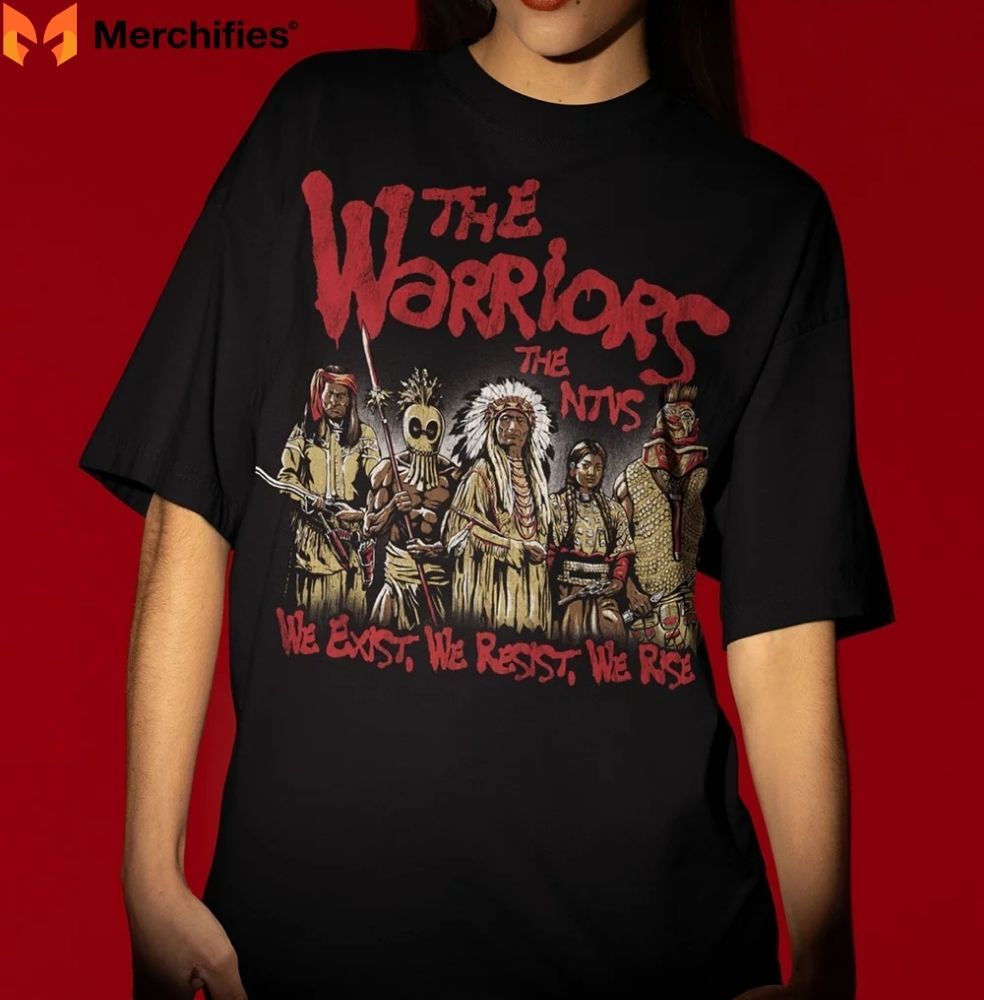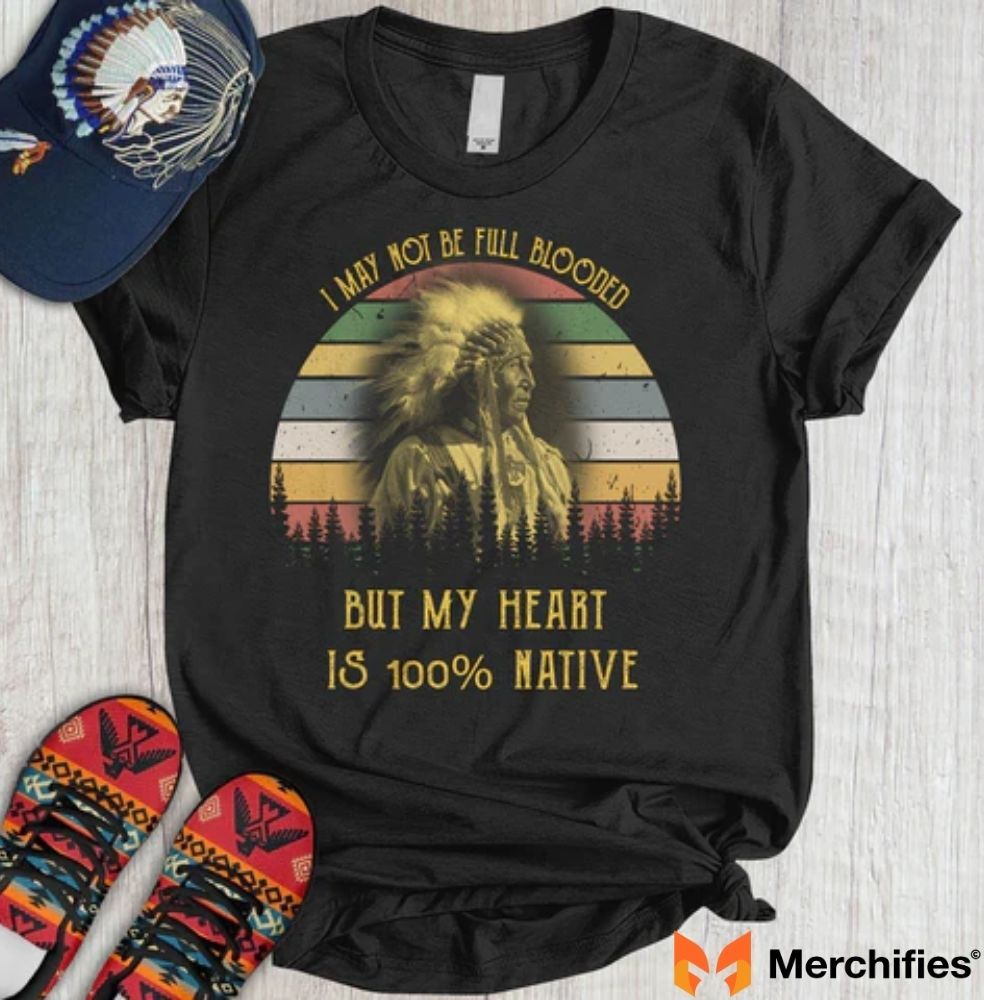Size & Fit Guide for Native American Shirts
Find your perfect fit with our Native American shirt size guide. Learn how to choose the right size for comfort, style, and cultural design.

Blog Post Contents
We've all been there: excitedly unboxing a new t-shirt, only to find it either clings in all the wrong places or hangs like a sack. It's a frustrating experience that many of us face, primarily because choosing the right t-shirt size often feels like a guessing game. The truth is, sizing inconsistency across brands is a pervasive issue in the fashion world, making finding your perfect fit a genuine challenge. But what if you could cut through the confusion and consistently pick shirts that feel like they were custom-made for you?
This comprehensive guide is your definitive resource to find your native shirts size – that ideal, true-to-you fit that enhances comfort and confidence. As Evelyn Sage, a seasoned apparel expert, shares insights throughout this article, you'll learn the secrets to achieving the perfect t-shirt fit effortlessly, transforming your wardrobe and your shopping experience. We'll cover everything from precise measurements and deciphering size charts to understanding fabric nuances and mastering online purchases. Get ready to banish ill-fitting shirts for good!
Why Your "Native" Shirt Size Matters: More Than Just Comfort
Understanding and embracing your "native" shirt size – your true, ideal fit – goes far beyond mere comfort. It's a fundamental aspect of how you present yourself to the world and how you feel in your own skin.
Confidence & Appearance: A well-fitting shirt is the foundation of a polished look. When your t-shirt sizing is correct, the garment drapes properly, accentuating your best features and creating a streamlined silhouette. This instantly elevates your appearance, leading to a noticeable boost in self-confidence. Conversely, an ill-fitting shirt can make you look disheveled or uncomfortable, regardless of the garment's quality.
Comfort & Mobility: True comfort comes from clothing that moves with you, not against you. A shirt that’s too tight can restrict movement and feel constricting, while one that’s too loose can bunch up and get in the way. Choosing the right t-shirt size ensures unrestricted motion, allowing you to go about your day with ease and feel genuinely at home in your clothes.
Longevity of Garments: You might not realize it, but proper fit contributes to the lifespan of your shirts. Clothes that are too tight experience undue stress on seams, leading to premature tearing and wear. Too-loose garments can snag more easily or suffer from excessive friction. By finding your perfect fit, you extend the life of your wardrobe investments, saving money in the long run.
Smart Shopping: Imagine a world with fewer returns and less buyer's remorse. When you know your native shirt size, you become a savvier shopper. You can confidently select items online and in-store, reducing the time and effort spent on exchanges and ensuring your purchases are smart, considered additions to your closet. This means more satisfaction and less frustration.
Essential Measurements for Your Perfect Shirt Fit (The Core of Any Native Shirt Size Guide)
To truly nail how to choose t shirt size, you need to start with accurate data: your own body measurements. This is the cornerstone of any effective native shirt size guide. Don't guess; measure!

Tools You'll Need:
- Soft Measuring Tape: Essential for contouring to your body.
- A Well-Fitting (But Not Tight) Shirt: This acts as a reference point for comparing dimensions later.
- A Pen and Paper (or Phone for Notes): To diligently record your shirt measurements.
- (Optional) A Friend to Help! Especially useful for back measurements like shoulder width or sleeve length.
How to Measure Yourself Accurately (Step-by-Step Guide with Visuals) For precise t-shirt sizing, always measure against your skin, wearing minimal clothing. Stand naturally and relax your body.
1. Chest Measurement: This is arguably the most critical measurement for t-shirt sizing.
How: Wrap the measuring tape around the fullest part of your chest, typically right under your armpits and across your shoulder blades. Ensure the tape is level and snug, but not constricting.
(Include an illustrative diagram/image placeholder here showing chest measurement.)
2. Shirt Length Measurement: This dictates how long the shirt will hang.
How: Measure from the highest point of your shoulder (right next to where your neck meets your shoulder) straight down to where you'd like the hem of the shirt to fall. For most t-shirts, this is typically around mid-hip.
(Include an illustrative diagram/image placeholder here showing shirt length measurement.)
3. Shoulder Width Measurement: Important for preventing shoulder seams from looking too wide or too narrow.
How: Measure straight across your back, from the outermost point of one shoulder (where the sleeve seam should naturally sit) to the same point on the other shoulder.
(Include an illustrative diagram/image placeholder here showing shoulder width measurement.)
4. Sleeve Length Measurement: Relevant for different sleeve styles.
How: For a short-sleeve t-shirt, measure from the top of your shoulder (where you took your shoulder width measurement) down to your desired sleeve length, often mid-bicep. For long sleeves, extend this to your wrist.
(Include an illustrative diagram/image placeholder here showing sleeve length measurement.)
5. (Optional) Neck Measurement: While less common for basic t-shirts, this is crucial for collared shirts or specific necklines.
How: Measure around the base of your neck, where a collar would naturally sit.
Pro Tip: Always measure twice! Small discrepancies can make a big difference in finding your perfect fit. Don't rush this step, as accuracy here saves a lot of hassle later.
Decoding T-Shirt Size Charts: How to Use Your Numbers to Find Your "Native" Size
Once you have your shirt measurements, the next step in how to choose t shirt size is to translate those numbers into a garment size. This is where understanding size charts becomes invaluable.

Understanding Standard Sizing (S, M, L, XL): Generally, standard sizing offers a broad guideline.
- Small (S) usually implies a chest around 34-36 inches,
- Medium (M) 38-40 inches
- Large (L) 42-44 inches, and so on.
These are often based on general body types. However, this is just a starting point, not a definitive rule for best t-shirt size.
Brand Variations: Why a Size 'M' Isn't Always a 'M': This is perhaps the biggest pitfall in t-shirt sizing. What one brand labels a 'Medium,' another might call a 'Small' or even a 'Large.' This phenomenon, sometimes called "vanity sizing," and regional differences mean you absolutely cannot assume consistency. As Evelyn Sage explains, "understanding these nuances is key; always consult the brand's unique t-shirt sizing chart on their website. It’s the single most important piece of advice I can give for online shopping."
Metric vs. Imperial Conversions: Most international brands will provide both inches (imperial) and centimeters (metric) on their charts. If your measuring tape is in one system, ensure you're referencing the corresponding column on the chart. A quick online converter can help if needed.
Reading the Chart: What to Prioritize: For how to choose t shirt size, your chest measurement is typically the most critical dimension for tops. Prioritize matching your chest measurement to the chart first. If your chest falls between sizes, consider your desired fit (do you prefer it snug or looser?). Then, look at length and shoulder width to ensure they align with your preferences and other shirt measurements. Some brands also include sleeve length which can be helpful.
Beyond the Tape Measure: Other Factors for the Ideal T-Shirt Fit
While measurements are foundational, achieving your native shirt size means considering a few other crucial elements that influence how a t-shirt looks and feels on your body. These subtle factors can significantly impact your t-shirt fit satisfaction.
Fabric Type and Stretch: The material a t-shirt is made from profoundly affects its drape, feel, and stretch. A 100% cotton tee will behave differently than a cotton-polyester blend or a synthetic performance fabric. Cotton typically offers less stretch and can be prone to shrinkage after washing, while blends might offer more elasticity and shape retention. Consider how the fabric's natural properties will interact with your body and your movement throughout the day.
Desired Fit: Slim, Regular, or Relaxed? Brands often offer different 'fits' within their t-shirt sizing options. Your personal measurements are a guide, but your style preference dictates the final choice:
Slim Fit: Designed to hug the body closely, offering a more tailored, contemporary silhouette. If you prefer this, your measured size might be perfect, or you might even size down if the fabric has significant stretch.
Regular Fit: The classic, comfortable choice. It's neither too tight nor too loose, providing a balanced look. This is often the safest bet for how to choose t shirt size based directly on your measurements.
Relaxed/Oversized Fit: Emphasizes comfort and a casual, roomy aesthetic. For this style, you might intentionally size up from your measured native shirt size to achieve the desired slouchy effect.
Body Shape Considerations: No two bodies are alike, and your unique proportions can influence t-shirt sizing. For example, someone with broad shoulders might need to prioritize shoulder width, even if their chest measurement suggests a smaller size. An athletic build might require more room in the chest and bicep area, leading them to find their perfect fit by focusing on those specific shirt measurements. Conversely, if you have a narrower frame, you might want to ensure the shirt isn't too boxy.
The Shrinkage Factor: Plan for the Wash: Natural fibers like cotton and linen can shrink, especially if not pre-shrunk by the manufacturer. If you're buying a 100% cotton tee that isn't labeled "pre-shrunk," it's often wise to size up, especially if your shirt measurements are borderline. Always check the care label and product description for notes on potential shrinkage, as this can dramatically alter your t-shirt fit after the first wash.
How to Choose T-Shirt Size Online: Pro Tips for Shopping Without Trying On
Online shopping is convenient, but it introduces the challenge of choosing the right t-shirt size without the benefit of a changing room. Here's how to navigate it like a pro.

Always Check the Brand's Specific Size Chart: This cannot be stressed enough. It is the absolute golden rule for online apparel purchases. Your native shirt size is brand-dependent. Every brand has its own unique t-shirt sizing guide, usually found on the product page or in a dedicated "size guide" section.
Read Customer Reviews & Look at User Photos: Real-world feedback is incredibly valuable. Customers often comment on how a shirt really fits, whether it "runs large" or "runs small," or if the fabric is different than expected. User-submitted photos can provide a visual reference that official product shots might lack, helping you visualize the t-shirt fit on various body types.
Utilize "Find Your Size" Tools: Many reputable online retailers now offer interactive sizing tools. These might ask for your height, weight, preferred fit, or even compare you to similar brands you already wear, then recommend your best t-shirt size. These algorithms can be surprisingly accurate for finding your perfect fit.
Compare to Your Best-Fitting T-Shirt: Take your favorite, best-fitting native shirt that you already own. Lay it flat and measure its chest width, length, and shoulder width. Then, compare these shirt measurements directly to the dimensions listed on the online brand's size chart. This is a highly effective method for ensuring your new purchase mirrors a fit you already love.
Understand the Return Policy: Before clicking "add to cart," always check the retailer's return and exchange policy. Knowing your options if the t-shirt sizing isn't perfect provides peace of mind and allows you to shop with greater confidence. Free returns are a huge bonus for apparel.
Consider Ordering Multiple Sizes: If you're genuinely uncertain, especially for an important purchase or a brand you've never tried, order your estimated best t-shirt size along with a size up or a size down. You can then try them all on at home and return the ones that don't quite hit that native shirt size sweet spot.
Common T-Shirt Sizing Mistakes to Avoid When Finding Your "Native" Fit
Even with all the tools and knowledge, it's easy to fall into common traps when trying to find your perfect fit. Being aware of these mistakes can save you a lot of hassle and help you nail your native shirt size every time.

Guessing Your Size: This is the most prevalent error. Relying on "I'm usually a Large" without cross-referencing shirt measurements against a brand's chart is a recipe for disappointment. Always, always measure!
Assuming Consistency Across Brands: As we've discussed, t-shirt sizing is highly inconsistent. A Medium from one brand can be vastly different from a Medium from another. Forgetting this crucial point means you're likely to get the wrong t-shirt fit.
Ignoring Fabric Type: Not accounting for the stretch, drape, or potential shrinkage after washing of different fabrics can lead to a perfectly sized shirt becoming too tight or too loose after a few washes.
Overlooking Your Desired Fit: If you want a relaxed look but buy a slim-fit shirt in your usual size, it won't be your native shirt. Always consider if you want a slim, regular, or oversized fit and adjust your t-shirt sizing expectations accordingly.
Forgetting to Re-Measure: Our bodies change over time. Weight fluctuations, changes in muscle mass, or even just differing preferences can alter your ideal shirt measurements. It's a good practice to re-measure yourself periodically, perhaps once a year, to ensure your native shirt size is still accurate.
Conclusion: Embrace Your Perfect Native Shirt Fit!
Navigating the world of t-shirt sizing doesn't have to be a frustrating ordeal. By taking the time to understand your own shirt measurements, diligently consulting brand-specific size charts, and factoring in fabric, desired fit, and body shape, you can transform your shopping experience. We've armed you with the essential steps and expert tips, drawing on years of experience in the apparel industry.
No more guesswork, no more wasted money on ill-fitting garments. You now possess the knowledge to confidently choose the right t-shirt size and curate a wardrobe full of comfortable, flattering "native shirts" that truly feel like they were made just for you. As Evelyn Sage concludes, "Finding your perfect fit isn't just about clothes; it's about confidence and feeling great in your own skin. With these guidelines, you're empowered to make smart choices every time." Go forth and embrace your perfect fit!
Frequently Asked Questions (FAQ) About Choosing T-Shirt Sizes
Q: What is the most important measurement for t-shirt sizing?
A: For most t-shirts, the chest measurement is the most critical for achieving the right t-shirt fit across the shoulders and body.
Q: How do I know if a t-shirt is too big or too small?
A: A shirt is too small if it pulls across the chest or back, restricts arm movement, or the seams ride up your armpits. It's too big if the shoulder seams hang past your natural shoulder line, the fabric bunches excessively, or it lacks definition.
Q: Should I size up or down if I'm between sizes?
A: If you're between sizes, consider your desired t-shirt fit. Size up for a more relaxed or comfortable fit, and size down for a slimmer, more tailored look. Always check customer reviews for specific brand recommendations.
Q: How much does a cotton t-shirt shrink?
A: Un-pre-shrunk 100% cotton can shrink by 3-5% (sometimes up to 10%) after the first few washes, especially if dried on high heat. Pre-shrunk cotton will shrink minimally. Always check the garment's label and care instructions.
Q: What does "native shirt size guide" mean?
A: In this context, "native shirt size guide" refers to a comprehensive resource that helps you discover your true, ideal, and perfectly fitted shirt size. It's about finding the size that naturally suits your unique body measurements and preferences, rather than relying on generic labels.